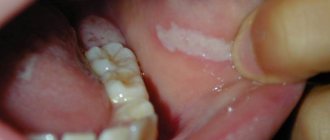A wound is damage to the skin and underlying body tissues. Such damage can be caused primarily by mechanical stress, as well as by the influence of excessive temperature or chemical factors. The wound healing process is absolutely physiological and occurs independently: the body, using natural mechanisms, restores the integrity of tissues and integuments, thus protecting internal organs. The only thing that can ensure faster wound healing is stimulation of regeneration processes and the elimination of the development of complications.
What types of wounds are there?
The healing process and time of damage largely depend on its type. Wounds, according to the factors that caused them, are divided into the following types:
- puncture wounds are injuries caused by a thin object pointed at the end (an awl, a knitting needle), which are distinguished by significant depth in relation to width. In the vast majority of cases, puncture wounds practically do not bleed and this can cause a dangerous misconception that they are not dangerous and, as a result, late seeking medical help. In fact, with a stab wound, damage to internal organs is often observed, as well as internal bleeding, often intense. In this case, blood accumulates, for example, in the abdominal cavity. A narrow wound channel blocks the access of oxygen to the damaged surface, which becomes fertile ground for the development of extremely dangerous gangrenous bacteria;
- incised wounds are injuries caused by a narrow, pointed object. They can also penetrate to a considerable depth, but, unlike stab wounds, they bleed much more, since in the process of inflicting such a wound a large number of blood vessels are damaged. The edges of such a wound are smooth;
- chopped wounds are injuries inflicted by a heavy pointed object (axe, shovel). The edges are often uneven, crushed, the wounds are usually deep;
- lacerations - usually occur with intense mechanical impact on a large area of skin. The edges are uneven, often the skin peels off from the underlying tissues with the formation of a scalped wound, and intense bleeding is not uncommon;
- Bite wounds are wounds that occur as a result of the impact of the teeth of an animal or a person on the body. On the teeth, as a rule, there is plaque with specific microorganisms, which often provoke significant inflammation in the wound;
- Contusion wounds are wounds caused by blunt force trauma. The skin and underlying tissues in the damaged area often become dead. Bleeding is usually minor, interstitial with the formation of a hematoma;
- A gunshot wound is a wound caused by a firearm. It is characterized by significant damage to the tissue around the wound channel due to the impact of bullet energy on them, as well as the presence of particles of clothing and gunpowder in the channel;
- burn wounds are wounds caused by exposure of the skin to thermal energy or concentrated alkalis/acids. The intensity of damage to the skin and underlying tissue depends on the severity of the burn.
How does wound healing proceed?
Wounds with smooth edges that are brought together as close as possible, without infection, heal by primary intention. If the edges of the wound are uneven, the wound surface is large, or an infection develops on it, we speak of secondary intention. Of course, the first way is preferable; it helps prevent the formation of a rough scar.
Wound healing occurs in three stages. The first of them is self-cleaning of the damaged surface. It occurs due to the physiological reaction of increasing the permeability of the walls of blood capillaries in response to damage. As a result, part of the blood plasma is released into the tissue, which appears on the surface of the wound, helping to cleanse it of contaminants and microorganisms.
The next stage is the inflammatory process, a natural consequence of the presence of contaminants on the surface of the wound, as well as tissue damage itself, which is accompanied by cell death and intoxication of the wound. When healing by primary intention and high-quality cleansing of the wound, inflammation is minimal.
Following inflammation, the stage of regeneration begins, it is manifested by the proliferation of granulation tissue, after which epithelization of the wound occurs, that is, the formation of new integumentary tissues. According to some classifications, the phase of wound epithelization is distinguished as a separate stage of healing, while other experts consider it an integral part of the granulation process.
How to speed up wound healing?
First of all, you should remember: the process of wound healing is an absolutely natural mechanism, the wound heals itself, and a person’s task is not to interfere with this process, not to disrupt it in any way. However, it is possible and necessary to speed it up and avoid possible complications. To do this, it is necessary, first of all, to provide competent first aid to the victim. In addition, it is important to consult a doctor promptly. Sometimes there is no need to treat a wound in a hospital setting; treatment can be carried out at home, but consulting a specialist in any case will not be superfluous. The organization of the wound treatment process also plays an important role. If all conditions are met, the regenerative capabilities of the body will help to quickly eliminate the damage, and soon epithelization and granulation of the wound will occur.
At the first aid stage
The process of its healing in the future largely depends on how effectively and competently first aid is provided when receiving a wound. Therefore, as first aid you need:
- stop the bleeding,
- wash the wound, clean it of dirt and foreign bodies.
To stop bleeding, a tourniquet is used (when applied, be sure to indicate the time when it was applied) or a pressure bandage. It is advisable to wash the wound with an antiseptic solution, hydrogen peroxide (which, by the way, helps stop bleeding) or, in extreme cases, with clean water. It is important to remove any foreign particles from the wound surface - each of them can subsequently become a source of purulent inflammation and, as a consequence, complications of wound healing. Large debris, slivers, and fragments are removed using tweezers.
Treatment of sores on the tongue
After determining the type and provoking factor of the disease, treatment is prescribed. Therapeutic dentistry is aimed at combating the damage itself, as well as the disorders that occur in the patient’s body. The course of treatment involves the prescription of medications and traditional healers. To increase the body's defenses, it is recommended to take vitamin complexes that include vitamins B and C. It is important to follow a diet that excludes hot, sour, salty, and spicy foods. A fungal infection does not allow the consumption of dairy and sweets. Therapy consists of the following stages:
- Healing, in which tissue is locally affected to eliminate pain, remove necrotic layers, and stimulate regeneration. It is necessary to treat caries, restore damaged fillings, correct bites, and grind the sharp edges of crowns.
- Antimicrobial therapy eliminates the provoking factors of the disease. Prescribed drugs against fungi, viruses, antihistamines and antibacterial drugs, rinses, applications, laser therapy, phonophoresis.
- General measures eliminate diseases of internal organs. They can be carried out in infectious diseases, pulmonology and other departments.
Drug therapy
Ulcerative formations require the following treatment:
- Pain is eliminated with the help of analgesics, which have a positive effect on inflamed tissue. These are Metrogyl Denta, Asepta-gel, Cholisal.
- If the disease is of an allergic nature, therapy includes taking antihistamines: Suprastin, Fenkarol, Tavegil.
- Bacterial lesions, when ulcerations are localized at the tip of the tongue, on the sides, at the root, require antiseptic substances: Miramistin, Chlogexidine.
- Gels for viral infections are prescribed in cases of herpes-related disease. This is Acyclovir, Oxolin.
- For aphthous stomatitis, sulfonamides and corticosteroids are prescribed.
Folk remedies
Quick treatment at home involves supplementing drug therapy with traditional medicine recipes. A solution made from the juices of Kalanchoe and aloe has high therapeutic effectiveness. It is used for rinsing. Plants relieve inflammation, heal damage, and eliminate abscesses. Decoctions of cinquefoil, St. John's wort, calendula, and chamomile are useful. Plants are antiseptic. Treatment should continue for 7-10 days. A solution based on hydrogen peroxide and water will disinfect and relieve pain.
An application of grated raw potatoes wrapped in gauze will remove the burning sensation. Local immunity will increase if you use freshly squeezed carrot juice, which should be diluted by half with water. Rinse the mouth with this solution at least 3 times a day.
Doctor's consultation: when is it necessary?
It is recommended to see a doctor, even if the wound does not seem serious. In addition, there are a number of cases when you cannot do without the help of a specialist. Such cases include:
- continued bleeding from the wound - it may be necessary to stop it by ligating the vessel, applying a suture, or using a hemostatic sponge;
- foreign bodies remaining in the wound, contamination;
- wounds caused by heavily contaminated, rusty, painted, grease-coated objects;
- wounds with signs of inflammation;
- wounds caused by animals;
- suspicion of a fracture, dislocation, ligament rupture.
In addition, it is not recommended to try to use certain medications on your own. The doctor prescribes an ointment for wound epithelization.
Treatment Basics
As mentioned earlier, treatment for tongue injuries depends on the nature of the injury. While a home first aid kit is sufficient to heal superficial injuries, eliminating the consequences of traumatic factors in case of serious injuries requires, first of all, consultation with a doctor who will select the necessary medications and prescribe recommended procedures.
What to do depending on the type of injury:
- The standard method of treatment or initial treatment of mechanical injuries is the use of antiseptics (alcohol, iodine, brilliant green). Rinsing with disinfectants helps in restoring the mucous membrane: furatsilin, hydrogen peroxide, potassium permanganate dissolved in water in a ratio of 1 to 3000 or baking soda at the rate of 1 teaspoon per 250 ml. Do not neglect plant decoctions with calming properties.
- Knowledge of chemical neutralizing reactions will be useful in case of chemical burns , because the “golden rule” of first aid for this is as follows: rinse with a neutralizing solution. Timely implementation of the necessary procedures will avoid further treatment. Blisters appearing on the tongue indicate severe damage. Opening of formations with subsequent processing should only be carried out by specialists. After neutralizing the blisters, doctors most often prescribe rinsing the mouth with disinfectants.
- Profusely bleeding wounds require immediate tamponade. It is unacceptable to independently remove foreign bodies from ulcers.
What can affect the wound healing process?
In addition to the type of wound (wounds with smooth edges heal faster), regeneration processes directly depend on the condition of the body itself. Consequently, sufficient rest, good nutrition, intake of vitamins and minerals into the body, and giving up bad habits have a positive effect on wound healing. It should also be taken into account that there are a number of diseases that can significantly inhibit the healing process. These are endocrine diseases (in particular, diabetes mellitus); pathologies of the vascular system, which are accompanied by a decrease in the intensity of blood microcirculation; anemia; hypovitaminosis conditions; cachexia (exhaustion); some cancers; obesity; pathologies of the urinary system; liver diseases; skin pathologies, including those of an allergic nature; immunodeficiency states. Therefore, in the presence of such pathologies, attention should be paid to their treatment, or at least compensation - this will have a positive effect on the healing time and will ensure accelerated epithelization of the wound.
The purulent-inflammatory process that begins in the wound surface significantly slows down and complicates the healing process. Therefore, one of the most important tasks in wound treatment is the prevention of purulent complications. For this purpose, first of all, a thorough initial treatment of the wound by a surgeon is performed. During it, if necessary, dead tissue in the wound is removed, the edges are smoothed, bleeding stops, and the wound itself is thoroughly cleaned of clots, dirt, and foreign bodies. After this, surgical sutures are placed on the wound, or, if there is a need to monitor the wound, it is left open (in this case, sutures will be applied later). The treated wound is covered with a sterile sticker or bandage, which prevents additional trauma to the wound surface and its contamination. Also, in order to prevent purulent complications (or if purulent inflammation has already begun), antibiotics may be prescribed to the victim.
The use of ointments with an antimicrobial effect - for example, Sulfargin - plays a major role in accelerating the healing of a superficial wound, which does not require the intervention of specialists. The active substance of the drug - silver sulfadiazine - has an antibacterial effect, which is prolonged due to the gradual release of silver ions from the ointment. In this regard, one application of the drug per day is sufficient. Sulfargin not only has an antiseptic effect, but also keeps the wound in a moderately moist state under the bandage, which helps make dressings less painful and traumatic. Applying a bandage with Sulfargin ointment to the wound after cleaning it helps speed up the healing process and prevent the development of complications.
Also, to speed up wound healing, ointments with hemoderivat of dairy calves (banned in Europe and America, but used in Russia), preparations based on polyethylene oxide, methyruracil, ichthyol, propolis, syntomycin, plant extracts (in particular, aloe, tea tree, eucalyptus) can be used ), ointments with vitamins (B5, A, C). You should know that drugs that accelerate wound healing should be used only as prescribed by a specialist.
Competent first aid and further treatment of the wound are the most important conditions for its speedy healing and the absence of complications.
Tongue cracks
Everyone has at least once encountered such an unpleasant phenomenon as the formation of a crack in the tongue. Moreover, very often it seems that the tongue has cracked for no apparent reason, on its own. Small cracks may not bother you at all for a long time, while deep cracks cause discomfort and acute pain to the patient. However, plaque and cracks should not be ignored, since over time even the smallest cracks, if left untreated, can increase in size and begin to hurt. We will tell you why they appear and what they mean, as well as whether congenital fissures are dangerous and how to treat them.
Officially, painful cracks on the tongue and along the edge of the tongue are called glossalgia. This is a fairly common neurosomatic disease.
The most common symptoms:
- dryness in the tongue area;
- itching and burning;
- swelling;
- soreness.
The insidiousness of glossalgia is that it does not go away on its own; without appropriate treatment it is impossible to get rid of a crack in the tongue.
At an early stage of the disease, the doctor may not notice pronounced cracks in the tongue, since they are microscopic and mainly manifest themselves as burning and pain. If you do not respond to this symptom in a timely manner, over time a crack may form at the tip or in the middle of the tongue, longitudinally, as well as cracks under the tongue and on the sides. In this case, the doctor also notes swelling and swelling of the tongue, atrophy of the salivary glands and filiform papillae on the surface of the tongue. The sooner you start treatment, the easier it is to get rid of glossalgia, so if you have cracks in your tongue, you should immediately consult a doctor.
Congenital fissures
It happens that a patient has cracks in the tongue since birth or childhood, which practically do not cause him any concern. Such cracks are usually transverse and are caused by the development and formation of the tongue.
Some patients have a so-called folded tongue, a congenital feature of tongue development. It is usually considered normal and does not require any treatment. The exception is red cracks in the tongue, which form at the bottom of the folds and cause pain to the patient. This happens with insufficient oral hygiene, so those with a folded tongue must carefully clean not only their teeth and gums, but also their tongue from plaque. If the owner of a folded tongue has developed cracks, treatment should be prescribed by a doctor, taking into account the design features of the patient’s tongue. To prevent the formation of folds in the depths, more attention should be paid to the sanitation of the oral cavity.
How do they look
Small cracks in the tongue can be completely invisible to the naked eye; only an experienced doctor can examine them using special instruments. The larger ones are clearly visible to the naked eye; they resemble longitudinal or transverse grooves on the tongue. Deep cracks look like crevices; sometimes the tongue appears to be cracked or split into two parts. If you notice such a problem, consult a doctor, even if nothing is bothering you at the moment. If an infection gets into the crack, the course of the disease may be complicated by the inflammatory process.
Reasons for appearance
Reasons for education:
- lack of nutrients, iron and vitamin PP in the patient’s body;
- anemia;
- lack of B vitamins;
- allergic reaction to toothpaste or medications;
- chronic fatigue and constant nervous tension;
- mechanical damage to the tongue (nervous biting, chewing);
- disruption of capillary blood flow in the tongue;
- the patient has diseases such as gastritis, enterocolitis, hepatitis, cholecystitis;
- wearing uncomfortable dentures.
The main reason why the tongue is cracked is mechanical injuries due to a lack of vitamins and microelements in the patient’s body. In this case, it is enough to bite your tongue while chewing food so that a painful crack forms at its tip.
Another fairly common reason why a patient’s tongue is cracked is a malfunction in the patient’s central nervous system, which is caused by chronic fatigue, frequent stress, and lack of sleep. This is a reason to suspect a problem with the hypothalamus.
It happens that patients are perplexed: why there are cracks on the tongue, there seems to be no visible reason for their appearance. In this case, the answer to the question of why cracks appear can only be given by an experienced doctor, after a thorough diagnosis. It is necessary to do a detailed blood test to determine which microelements and vitamins are missing in the patient’s body. Quite often, correction of the nutritional system helps get rid of the disease.
Many people are probably interested in the question of what cracks mean. After all, the tongue, as is known, signals the presence of many diseases and pathological conditions of the human body. Cracks in the tongue are a sign of a lack of vitamins and microelements in the body. Quite often, cracks are caused by worms, as they deplete the human body, causing anemia and iron deficiency. They also indicate a diseased liver, since with this disease the human body does not receive many microelements important for health.
Cracks in the tongue on the side can be a sign of thyroid disease; in this case, it swells and is injured at the edges by the patient’s teeth.
Treatment
The main question that worries patients with glossalgia is how to cure cracks in the tongue. In fact, everything is not so difficult. The treatment method depends on the cause of glossalgia.
- First, it is necessary to eliminate the dental causes of tongue cracks - correct an incorrect bite, replace defective fillings, repair a prosthesis. Next, the patient should be carefully examined by a therapist, neurologist, and, if necessary, by an endocrinologist and gastroenterologist. And only after this should treatment for glossalgia be prescribed.
- Typically, treatment for fissures consists of drug therapy and physiotherapeutic procedures. Treatment with medications is to improve blood circulation in the tissues of the oral cavity, as well as to improve general cerebral circulation. For this purpose, drugs such as trental, cavinton, nicotinic acid, and vitamin C are prescribed.
- The tone of the autonomic nervous system should also be improved; for this purpose, sedatives are prescribed - tincture of valerian, motherwort, persen.
- Additionally, the doctor may prescribe procedures such as electrical neurostimulation using a TENS device. A good effect is achieved by using electrophoresis, as well as iontophoresis of novocaine.
- If the tongue is severely painful, the doctor may prescribe local painkillers - lidocaine, dicaine.
- If the patient has cracks in the tongue, plaque and burning, it is necessary to adjust the diet. During treatment, you should completely exclude from the diet foods that irritate the surface of the tongue - such as sour juices, vegetables, pickles and marinades. You should not consume large amounts of spices, especially pepper and salt. It is advisable to quit smoking.
- After each meal, be sure to brush your teeth and rinse your mouth with salted water or a decoction of medicinal herbs. Oak bark, sage, propolis, and honey have a healing effect.










